If you are familiar with the Montessori philosophy and the materials that are used in the classroom, then this list of sensorial materials will be "old hat." However, if you are new to Montessori and are wanting to incorporate Montessori materials into your homeschool environment, this list will be helpful. This list of Montessori Sensorial Materials is for ages 2.5 to 6.5 years old. Also, with "extension" exercises added these materials can possibly be enjoyed up to 7 or 8 years of age. 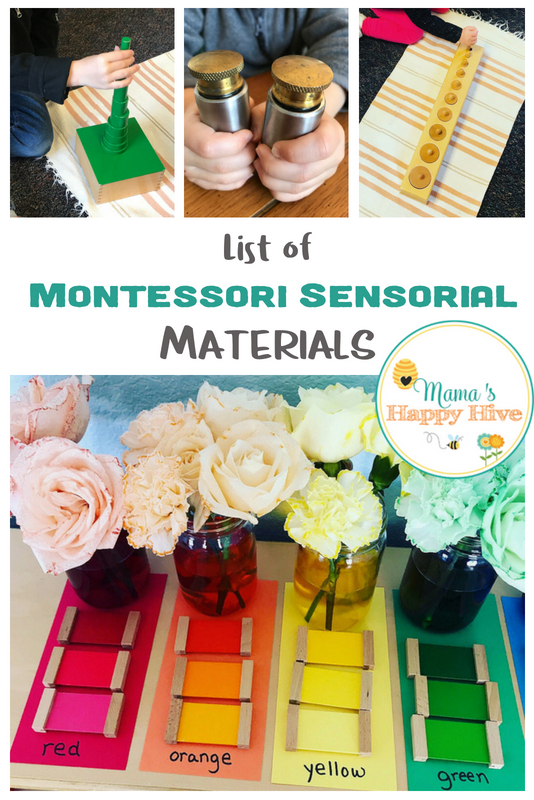
Montessori Sensorial Materials
What are Montessori sensorial materials?
These materials were brilliantly designed by Dr. Maria Montessori in the late 1800's. Her goal was to help a child absorb abstract information, sharpen their senses, and classify their environment. All while using these concrete hands-on manipulatives. Each material has a "control of error" to allow the child to self-correct himself. This encourages the child to process the information for themselves and find the answer to the problem. The beauty of Montessori materials is that they teach a child to think for themselves using a systematic approach. These materials help a child embrace and fine-tune their senses. The materials cover the five senses.
The Five Senses Include:
- Visual (Seeing)
- Acoustic (Hearing)
- Tactile (Touching)
- Olfactory (Smelling)
- Gastatory (Tasting)
FYI: The sensorial materials can be more of a challenge and heighten a child's senses by closing their eyes or being blindfolded, as well as adding "extension" exercises.
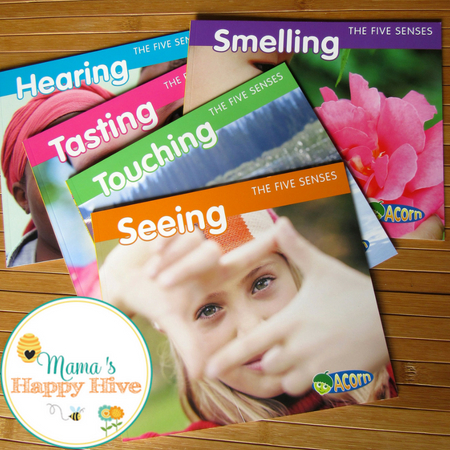
Our Favorite Materials for the Five Senses
- Color Tablets (Seeing)
- Sound Cylinders (Hearing)
- Touch Tablets (Touching)
- Smelling Bottles (Smelling)
- Tasting Bottles (Tasting)
List of Montessori Sensorial Materials
In this list, you will find different materials present in the Montessori Sensory Teaching Manual. If you buy the manual, you will also see the step by step for each material. Another wonderful online resource for step-by-step instructions is infomontessori.com.
What to keep in mind when using these Montessori sensorial activities?
Please note that the list below is only a guide to the possible order of introduction of the sensory materials. It is important to "follow the child" and what interests him and move to the child's rhythm. For example, you want the child to get involved with work. If the job is too challenging, then take a step back and reevaluate. Repetition with less challenging work is perfectly acceptable until the child is developmentally ready to move on.
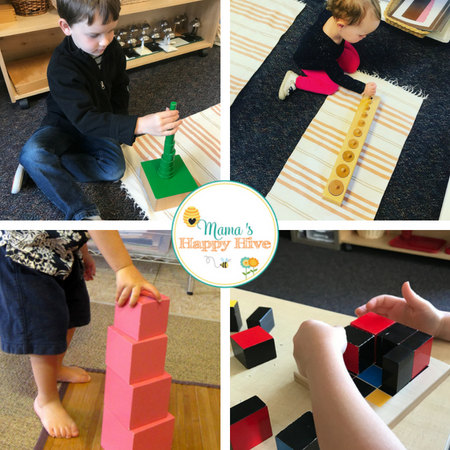
Discrimination of Size
- The 4 Cylinder Blocks
- Pink Tower - DIY Option
- Brown Stair
- Red Rods - DIY Option
- Knobless Cylinders
- Binomial Cube
- Trinomial Cube
- Small Metal Insets
- Decanomial Square
Discrimination of Color
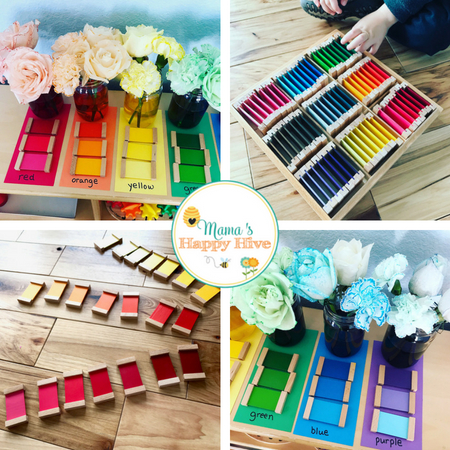
Discrimination of Shape
- Rectangular Box A
- Rectangular Box B
- Triangular Box
- Large Hexagonal Box
- Small Hexagonal Box
- Superimposed Geometric Figures
- Botany Cabinet
Tactile Sense
- Touch Boards – DIY Option
- Touch Tablets
- Fabrics DIY
Baric Sense
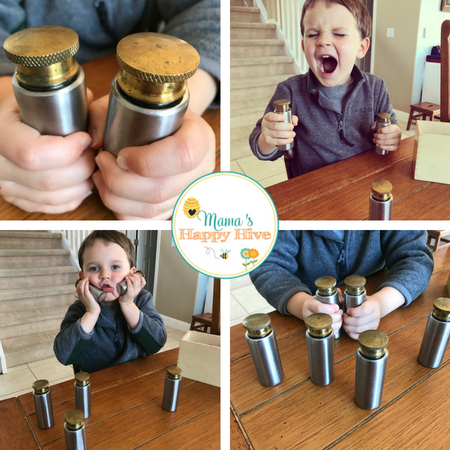
Thermic Sense
Stereognostic Sense
- Geometric Solids
- Mystery Bag
- Progressive Exercises
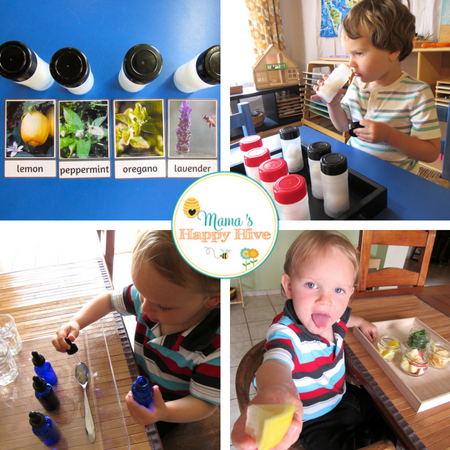
Gustatory Sense
Olfactory Sense
Auditory Sense
- Sound Cylinders - DIY Option and DIY Option
- The Bells
- Writing Music - Green Boards
- Reading Music - White Boards
- Listening to Music
- Musical Instruments
- Rhythm
- Walking on the Line to Music
- Dancing
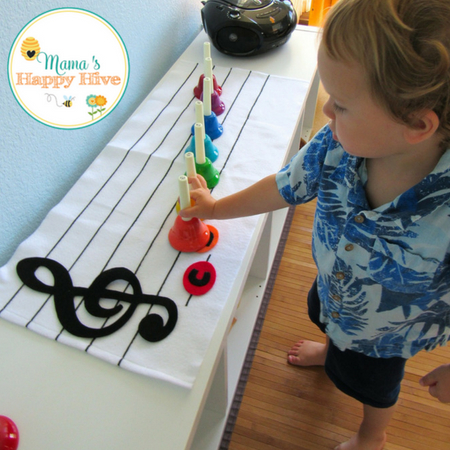
Please also enjoy these DIY sensorial posts:
DIY Montessori Tasting Bottles and Free Printables
DIY Montessori Smelling Bottles and Free Printables
Montessori Inspired Music for Young Children
Fun Color Learning Activities for Toddlers
Montessori Inspired Toddler Rainbow Unit
12 Months of Montessori
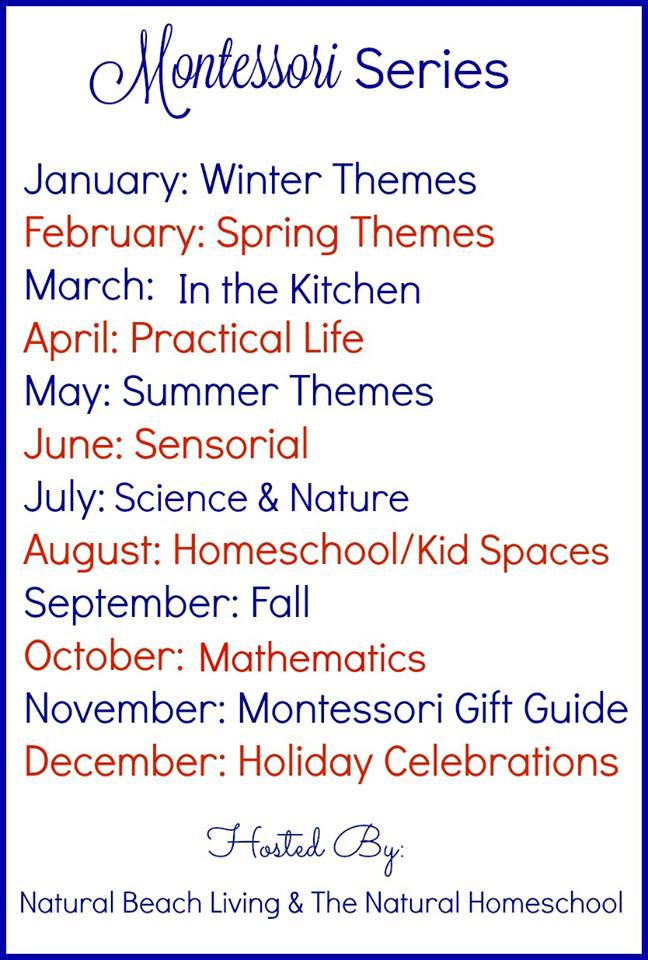
2018 Themes
June 26th - Montessori Sensorial
| Natural Beach Living
Montessori Sensorial Activities ~ Mystery Bag Lesson, Extensions & Printable | The Natural Homeschool
How to Present the First Montessori Sensorial Materials | Living Montessori Now
List of Montessori Sensorial Materials | Mama’s Happy Hive
Sensorial Exploration for Babies and Toddlers | The Kavanaugh Report


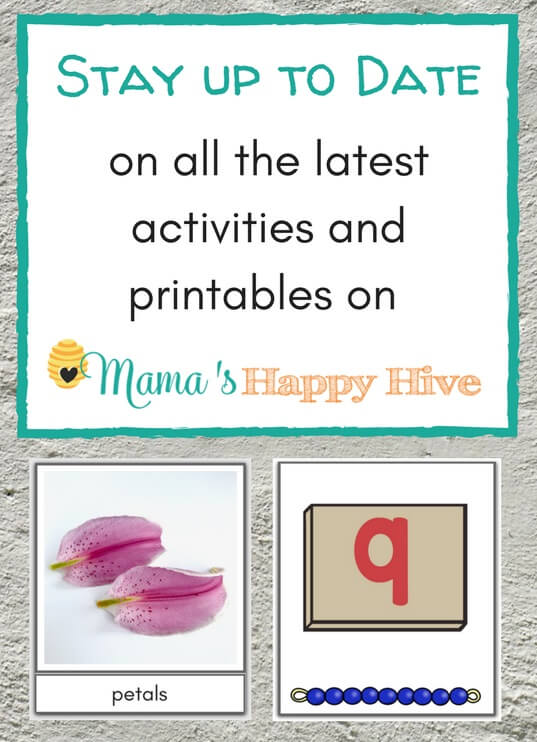
Leave a Reply